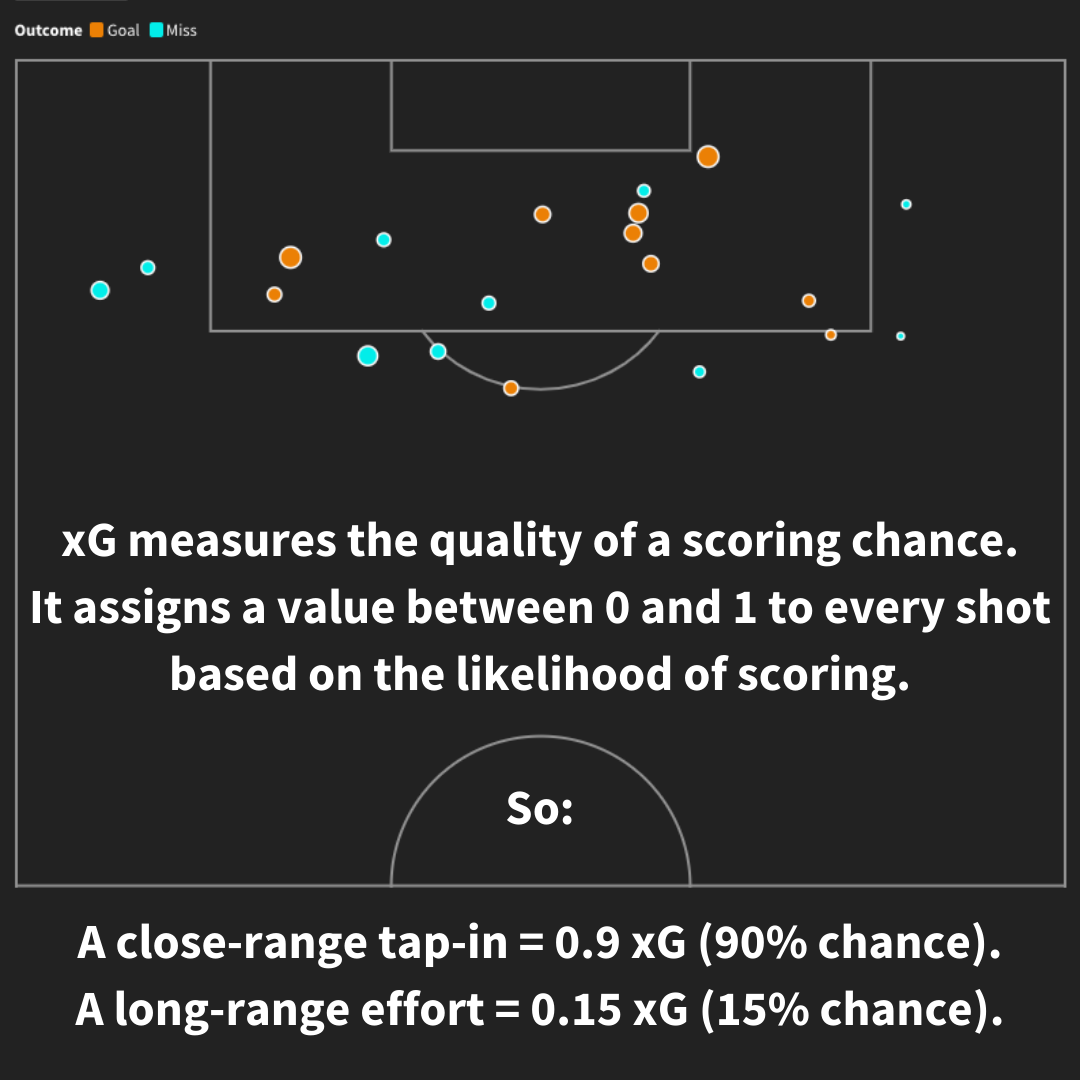Football might be the most unpredictable sport on the planet, idk idk I’m definitely bias…
Just when you’re convinced a top striker couldn’t possibly miss, they sky the ball over an open net, classic. That my friends is where xG steps in. Rather than just counting shots, xG aims to quantify the quality of each chance, giving us a measure of how likely it is to become a goal. It gives us a nice full picture sort of view, where we’re not just looking at who shot and who scored, but how good the opportunity really was.
In our cute little graphic below we see some a bit of generalization visualization … If you take a second and notice the difference in size, I chose that to represent our difference in xG, the larger the dot the higher the xG.
As you can see xG can be small even if a goal is scored, and just to be clear this particular graphic isn’t meant to give a full scope of the stat either. As I said xG has got a lot to do with shot type, angle, quality and so on. For example our closest goal to the net, the big orange circle in front of the net, was most likely a flat ball placed across the net real high probability, but showing all that info ugh thats to much work so just take my word.
Moving on now, let’s look at how xG informs our perception of players. Take Erling Haaland as a prime example: He usually outperforms his xG, indicating that he’s not just in the right place at the right time, he’s also converting chances that most forwards might fluff. On the other hand, Darwin Núñez generates plenty of xG but can sometimes fall short in converting. Depending on how you see it, this might mean that Dawins’s finishing needs a bit more polish, or it might be a hint that he’s on the verge of a scoring explosion once everything clicks, most would argue in the case of our dear Uruguayan brother its the former. And then there are players like Bukayo Saka, who I must unfortunately give his flowers to despite the kit he wears, as his goals and xG numbers align so closely that you can practically call him Mr. Consistent in front of goal.
Of course, no metric, no matter how clever, can capture all the nuances of the game. Football is a wonderful beautiful game because of all these variables, a player’s confidence, the manager’s tactics, even the bloody weather on a given day can tilt the odds. But xG still transforms how we view performance, pointing out which teams create better chances and which strikers consistently beat the odds. It’s not a crystal ball, but it is an extremely powerful tool that gives us much needed insights on the probabilities that fuel football’s most dramatic moments.
So, how much weight should we give xG when assessing a player’s or team’s quality? Does it revolutionize scouting and match analysis, or is it just another piece of the puzzle? Thankfully I’m not here to answer any of those hard pressing questions, so instead I leave you with this. Whether you’re a die hard stats enthusiast or more of a purist, there’s no denying that xG has changed the way we talk about football, and see football and rightfully so.
Joga Bonito






